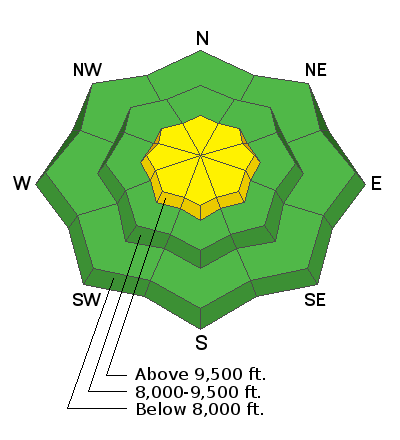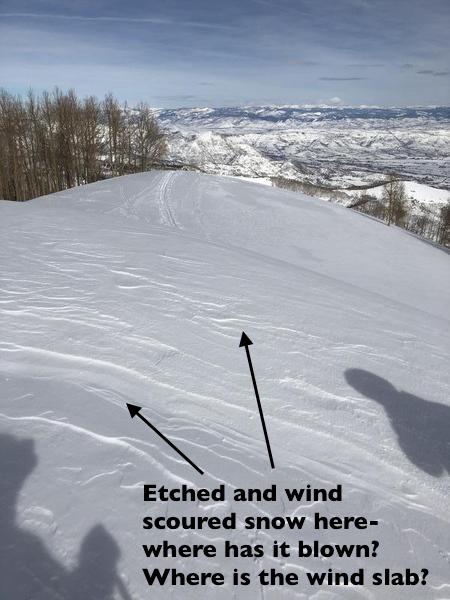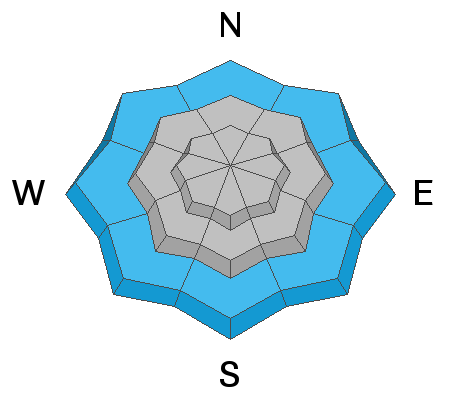This morning, under mostly cloudy skies, temperatures are below freezing, in the mid to upper twenties. It’s going to be another warm, humid day with cloudy skies and temperatures warming to near 40 at 8,500’ and near 30 at 10,000’.
Yesterday, most locations picked up 1 to 2” of dense snow above about 8,000’. Another trace to 2” of snow is possible this afternoon, with the rain/snow line between 6,500 and 7,000’.
There will be a bit of a break from the recent strong southwesterly winds, with 10 to 20 mph averages at 9 and 10,000’, and only the 11,000’ peaks averaging to 30 mph at times, gusting to 40.
Isolated patches of soft dense powder can be found on wind sheltered mid and upper elevation slopes. The snow at the lower elevations is an inconsistent mix of mashed potatoes and crusts.
Overnight, the mountains could get 3 to 5” of snow as a weak cold front moves through. This will be followed by small disturbances adding 1 to 3” every 12 hours, which could add up to a nice refresh of dense snow at the mid and upper elevations.
There was one collapse reported on a north facing, mid elevation slope in Big Cottonwood and observations of the wind still drifting and loading snow along ridge lines.
Close by in the Ogden area mountains, resorts have been able to pry out isolated, stubborn hard wind drifts over the past few days, including one that was skier triggered.











